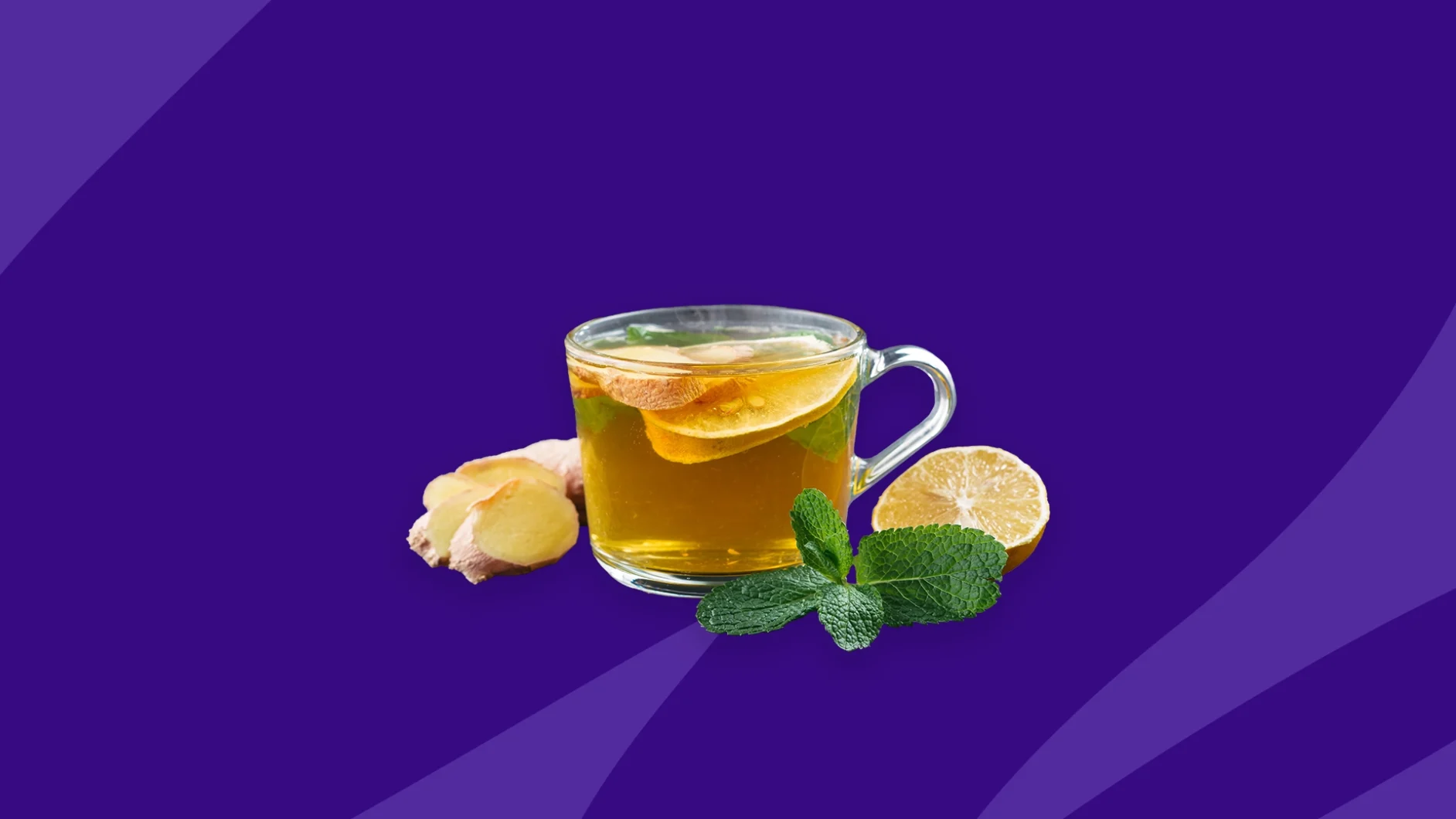“Phlegm can be defined as a type of mucus produced by your lungs and respiratory tract—often during a common cold or other respiratory infection, “ says Kelvin Fernandez, MD, an internal medicine physician in New Jersey and Medical Residency Advisory at ACE Medical Boards.
Mucus is a thin, slippery substance that is considered healthy. When the amount of mucus is more than normal, it can be associated with nasal symptoms of a runny nose or post-nasal drip. Phlegm is a thicker, stickier substance produced primarily in the lower airways, including the lungs and bronchi. “While mucus, in general, helps to keep our airways moist and trap foreign particles, phlegm is the body’s response to inflammation or infection and often indicates that the body is fighting off something harmful,” explains Geoff Trenkle, DO, a physician in Los Angeles and CEO and Founder of the Los Angeles Center for Ear, Nose, Throat, and Allergy.
Mucus and phlegm are often talked about together because the phlegm that we see when it leaves our body is actually a combination of the mucus found in the nasal passages mixed with phlegm from chest congestion in the lungs. “Phlegm and mucus are basically the same thing, but where they are coming from is why we call one phlegm and one mucus,” Trenkle clarifies. With cold and flu season in full swing, now is a great time to get familiar with phlegm—and home remedies and natural remedies that will help you cope with excess phlegm production.
How to get rid of phlegm
Here are 12 home remedies that may help you cope with the side effects of excess phlegm production.
1. Stay hydrated
“Staying hydrated and drinking plenty of water helps thin the mucus,” says Trenkle. Your body needs to maintain a proper level of hydration to ensure that your mucosal secretions are a healthy consistency, and staying hydrated contributes to overall wellness.
If you’re sick of plain H20, try herbal tea. The hot water in tea can be soothing to the throat and some herbal teas—like mint—can be stimulating to the sinuses. For an added bonus, mix in honey and lemon. “The combination of honey and lemon in a glass of warm water can reduce irritation and help alleviate excess mucus production,” says Trenkle. Plus, honey has antimicrobial properties, which may be helpful if you’re fighting an infection.
RELATED: How much water should you drink a day? | Health benefits of drinking water
2. Avoid alcohol and caffeine
Both alcohol and caffeine can be dehydrating, which can cause mucus to become thicker. If phlegm becomes symptomatic, it’s especially important to drink plenty of hydrating beverages, such as herbal tea, juice, and electrolyte solutions, such as Pedialyte.
3. Inhale steam
Inhaling steam can loosen phlegm and make it easier to expel, says Trenkle. The water from steam lubricates the mucus membranes, and the heat can be soothing. You can use a vaporizer or make a tent out of a towel placed over a bowl of hot water.
Taking a hot shower can be helpful, says Fernandez. A warm bath can be soothing for the body and also keep the air around you moist. Not only that, but the heat can help thin mucus and clear nasal passages and lungs.
4. Use humidifiers
Using humidifiers keeps the air you breathe in moist. Humidity is crucial for maintaining hydration and keeping mucosal membranes from drying out. If you have a sore throat, bronchitis, or any kind of respiratory irritation, moist air can make you feel a lot more comfortable. You can add essential oils, such as eucalyptus, for an aromatherapy experience. Clean the humidifier at the frequency and with the ingredients (vinegar or bleach) per the owner’s manual. This will ensure that the humidifier does not release mold into the air.
Eucalyptus oil is a natural product derived from the eucalyptus plant. This essential oil is prized for its antimicrobial and antibacterial properties. You can put it in a humidifier or vaporizer to spread the aroma throughout your living space.
5. Change HVAC filters
Trenkle and Fernandez agree that exposure to allergens, irritants, and pollutants can cause phlegm production. Making sure that dust and debris don’t build up on your heating and cooling filters and cleaning them on a regular basis can increase the air quality in your environment.
6. Use an air purifier
“Conditions, such as allergies or exposure to toxins, such as mold, or even pollution, can cause an increase in thickness and production of mucus,” says Trenkle. You can improve the air quality in your home—and remove some allergens and irritants—by using a high-quality air purifier with a HEPA (high-efficiency particulate air) filter.
7. Keep your head elevated
Keeping the head elevated, especially while you sleep, can reduce post-nasal drip at the back of your throat and into your lungs—which may contribute to excess phlegm. Try sleeping with your head up on a pillow to reduce the symptoms.
8. Use a saline nasal rinse
Rinsing your nasal passages is a safe and effective way to moisten nasal passages, according to the U.S. Food and Drug Administration (FDA). Use a neti pot with distilled or boiled (then cooled) salt water or use a saline solution specifically formulated as a nasal rinse. You can also try a saline nasal spray to help moisten the nasal passages, but this is less effective at expelling mucus. Nasal spray can be especially helpful if phlegm is caused by a common cold or upper respiratory irritation.
9. Keep track of food allergies
Some foods may cause extra mucus or phlegm production. Keep a food diary and make note of any changes in your phlegm production that could be related to your diet. Don’t make any assumptions, though. Talk to a healthcare professional if you suspect you have a food allergy.
10. Eat fruit
Clinical studies show that there could be a connection between fiber intake and lung health, and fruit is a great source of fiber. Plus, many fruits are packed with vitamins and antioxidants that will boost your immune system if you’re fighting off a common cold or flu.
11. Avoid airborne allergens and irritants
Allergens and irritants contribute to phlegm production. Try to avoid known or possible allergens, such as cigarette smoke and pollen, as much as possible. Keep windows closed during times of increased air pollution (allergens or near a wildfire), vacuum carpets weekly, and change pillowcases nightly.
“Some kinds of chronic inflammatory condition, such as smoking or exposure to toxins in the lungs, might produce increased phlegm,” says Trenkle. So try to avoid both smoking and secondhand smoke if you have phlegm.
12. Avoid acidic foods
Acid reflux can increase the body’s production of phlegm and mucus. If you have GERD or other digestive issues it’s better to steer clear of acidic foods if you’re dealing with phlegm. Consider taking medication to help decrease reflux symptoms, like proton pump inhibitors (PPIs) or H2 blockers.
What causes phlegm?
There are numerous reasons for the increased phlegm:
- Respiratory infections including common colds, the flu, bronchitis, and pneumonia
- Environmental factors, such as allergies, smoking, and exposure to irritants like pollution or certain chemicals
- Chronic conditions like asthma, gastroesophageal reflux disease (GERD), and chronic obstructive pulmonary disease (COPD)
Phlegm is “typically a response to inflammation or infection in the lungs and can vary in color, ranging from clear to white, yellow, green, or even brown or red if there’s blood present,” says Trenkle. “The presence of colored phlegm, especially green or yellow, might indicate an ongoing bacterial infection, while clear phlegm is more commonly associated with viral infections or other irritants.”
What to try when phlegm remedies don’t work
When it comes to alleviating phlegm, if natural at-home remedies don’t do the trick of reducing phlegm, there are several over-the-counter and prescription medications available, Trenkle explains. The following medications may help alleviate excess phlegm:
- Expectorants, such as guaifenesin—which is the active ingredient in products like Mucinex—aid in loosening and clearing mucus from the airways.
- Antihistamines can be effective, especially if allergies are triggering excess mucus production.
- Decongestants, such as Sudafed (pseudoephedrine) can help decrease mucus production and post-nasal drip.
- Prescription inhalers, steroids, and antibiotics may be prescribed by a healthcare provider to address underlying conditions.
What’s not effective? “Cough suppressants used to curb coughing might not address phlegm directly,” says Trenkle. While a cough suppressant may prevent you from coughing, it does not decrease phlegm production.
When to see your healthcare provider
No one wants to rush off to the doctor’s office every time they have a cough, but there are times when it’s really important to see a medical professional. “If you are experiencing persistent symptoms such as phlegm lasting more than a month, blood-tinged mucus, trouble breathing, or chest pain, you might need to see a doctor,” Fernandez suggests. Doctors can do diagnostic tests to rule out serious conditions—or to ensure they are treated quickly.
Yes, agrees Trenkle, “Any excess amount of mucus or phlegm is not normal.” But it also may not indicate infection, he explains. “There is likely some underlying condition causing inflammation in either the nose or the lungs.” Trenkle recommends seeking the guidance of an ear, nose, and throat (ENT) specialist or pulmonologist, depending on which area you think is affected more.
Trenkle says that it’s crucial to talk to a provider if phlegm is persistent, unusual in color or consistency, or accompanied by other symptoms. “It’s recommended to consult with a doctor if phlegm lasts for more than three weeks, there’s blood in the phlegm, or you experience difficulty breathing or shortness of breath, or if you have other symptoms like chest pain, fever, or unexplained weight loss.”
Sources
- The effects of a hot drink on nasal airflow and symptoms of common cold and flu, NIH (2008)
- Environmental triggers for common cough, NIH (2019)
- Food allergy symptoms and diagnosis, UpToDate (2023)
- GERD and LPR, American Academy of Otolaryngology-Head and Neck Surgery Foundation (2023)
- Got a cold? Try some honey, Harvard Health (2020)
- Humidifiers and health, MedLine Plus (2022)
- Is rinsing your nasal passages with net pots safe? FDA (2023)
- Management of airway mucus hypersecretion in chronic airway inflammatory disease, NIH (2018)
- Mechanism of dehydration following alcohol consumption, Journal of American Medicine (1963)
- Mucus matters. Are snot and phlegm our friends? Children’s Hospital of Richmond at VCU (2023)
- Pathophysiology of nasal congestion, FDA (2023)
- The relationship between dietary fiber intake and lung function, American Thoracic Society (2016)
- Role of guaifenesin in the management of chronic bronchitis and upper respiratory tract infections, BioMed Central (2017)
- What to do about sinusitis, Harvard Health (2022)











